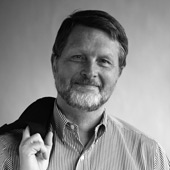This weekend marks the twenty-fourth showing of the Outsider Art Fair in New York, one of the world's most exciting art fairs if you are looking for art that is authentic, honest, and surprisingly fresh. It has taken nearly a quarter of a century for this fair to mature into what it is today, thanks in part to new ownership by Andrew Edlin, who has become one of the power players of the field. That said, you will never meet a more down-to-earth or friendlier person. The Outsider Fair began in 1993 as a celebration of art that had, for too long, been bypassed and largely misunderstood by the rest of the art world. This was art that did not fit neatly into defined boxes, and before 1993, struggled to find a market.
The fact is "outsider art" has always been an evolving form. If we go back to the early twentieth century, there were a few visionaries who did much to bring awareness to the genre. Sidney Janis (1896–1989) was one of the first American art dealers to champion the work of what was then called “primitive artists.” His book They Taught Themselves, published in 1942, was one of the first serious books to take on the notion that serious art could be made by everyday people. It took on the idea that artists could be self-taught.
In the nineteenth and early twentieth centuries, this art was called “folk art” and was characterized by exhibitions and early publications showing Limner painters of colonial times, weather vanes, quilts, and cigar store Indians. It was quaint and charming, but nonetheless important for what it was. In his book, Janis pointed out that important art was still happening within that earlier context—but what he had discovered was decidedly different. Though he represented leading avant-garde European and American artists, it was Janis who introduced an array of self-taught masters such as Morris Hirshfield, John Kane, Joseph Pickett, Anna Mary Robertson (Grandma) Moses, and Horace Pippin. At that time, Janis had such influence in the art world he could promote just about anyone he wanted, and he used his clout by making others aware of art by the self-taught.
Europe had its own recognition of this art, with Jean Dubuffet and André Breton collecting art within a genre they called Art Brut (quite literally “raw art”). The art they collected were by so-called psychotic individuals who existed almost totally outside of mainstream culture. This was, to these two artist/collectors, “unaffected art”—art that welled up and manifested itself from sources unknown. And while the term art brut is still used today—the meaning of that and the term outsider art is very close in definition.
Aside from Janis, it would be a mistake not to mention Otto Kallir (1894–1978), who established Galerie St. Etienne in New York, in 1939. Kallir was Grandma Moses' dealer, and he promoted her (and others) throughout her life.
It would be more than thirty years, in the 1970s, before Janet Fleisher (1917–2010) and John Ollman began showing exciting new work by self-taught artists like Bill Traylor (his work sold for $100 apiece then) and Sister Gertrude Morgan, in Philadelphia. In Chicago, during that same period, it was now retired art maverick Phyllis Kind (b. 1933) who began showing some of the same artists, as well as work by the Chicago Imagists like Jim Nutt, Ray Yoshida, Roger Brown, and others.
By the 1990s, the evolution of this art was in full swing, with many galleries and collectors from around the world exhibiting it, researching it, and art magazines devoted to it.
So, as we celebrate the 2016 Art Fair, it’s good to look back at just how long it has taken for this art fair to fully develop. As longtime art dealer John Ollman told me for this article, “I’ve long been over calling this work by this name or that. It’s just art. We show art we that we like.”
The 24th Annual Outsider Art Fair is being held now through Sunday at The Metropolitan Pavilion at 128 West 18th Street.
++++

Loic Lucas
Untitled 2015
Ink on Paper
7.25 x 10.25 inches
Grey Carter Objects of Art

J.J. Cromer
Not One Word of Retreat, 2007
Mixed Media
22 x 30 inches
Grey Carter Objects of Art

Dan Miller
Untitled, 2011
Mixed Media
20 x 20 inches
Creative Growth

Eugene von Bruenchenhein
Untitled, 1940s
9 x 5 x 4 inches
Chicken bones and paint
Andrew Edlin Gallery

Melvin Way
Untitled, (Nothing from Nothing), 1990s
4. 5 x 5.5 inches
Ink and Tape on Paper
Andrew Edlin Gallery

Henry Darger
Untitled (They are chased again however, and have to give up for want of breath)
18 x 32 inches
Watercolor and pencil on paper
Andrew Edlin Gallery

David Butler
7-Headed Dragon With Green Spots
c. 1975
Housepaint on tin
36 x 26 inches
Gilley’s Gallery

Bill Traylor
Black male dog with red eye and tongue, c. 1939-1942
Pencil, poster paint on found Cardboard
16.5 x 16 inches
Carl Hammer Gallery

Christine Sefolosha
Sans titre
Mixed Media on Paper
74 x 97 cm
Galerie Polad-Hardouin, Paris

Frédérick Bruly Bouabré
La Haute Navigation
Ballpoint pen and crayon on carton
5-7/8 x 3-7/8 inches
Galerie Bourbon-Lally, Haiti

Guyodo (Frantz Jacques)
Untitled, 2014
Ballpoint pen on recycled cornflakes box
15.93 x 23.23 inches
Cavin-Morris Gallery

Hawkins Bolden
Untitled, ca. 1980s
Mixed Media
54 x 18 x 8 inches
SHRINE Gallery

Uncle Pete Drgic
Untitled, Birds, c. 1977
House paint on board
18 x 28 inches
Webb Gallery

Kevin Blythe Sampson
Spawn of the South, 2014
Mixed Media
16 x 20 x 14 inches
Cavin-Morris Gallery

Robert Adale Davis
Born of the Horns of Dilemma the Bull of Paradox, 2015
Wrapped string, cloth, strap, and hook
18 inches wide
American Primitive Gallery

Views of last year’s Outsider Art Fair


Comments [1]
01.25.16
03:48